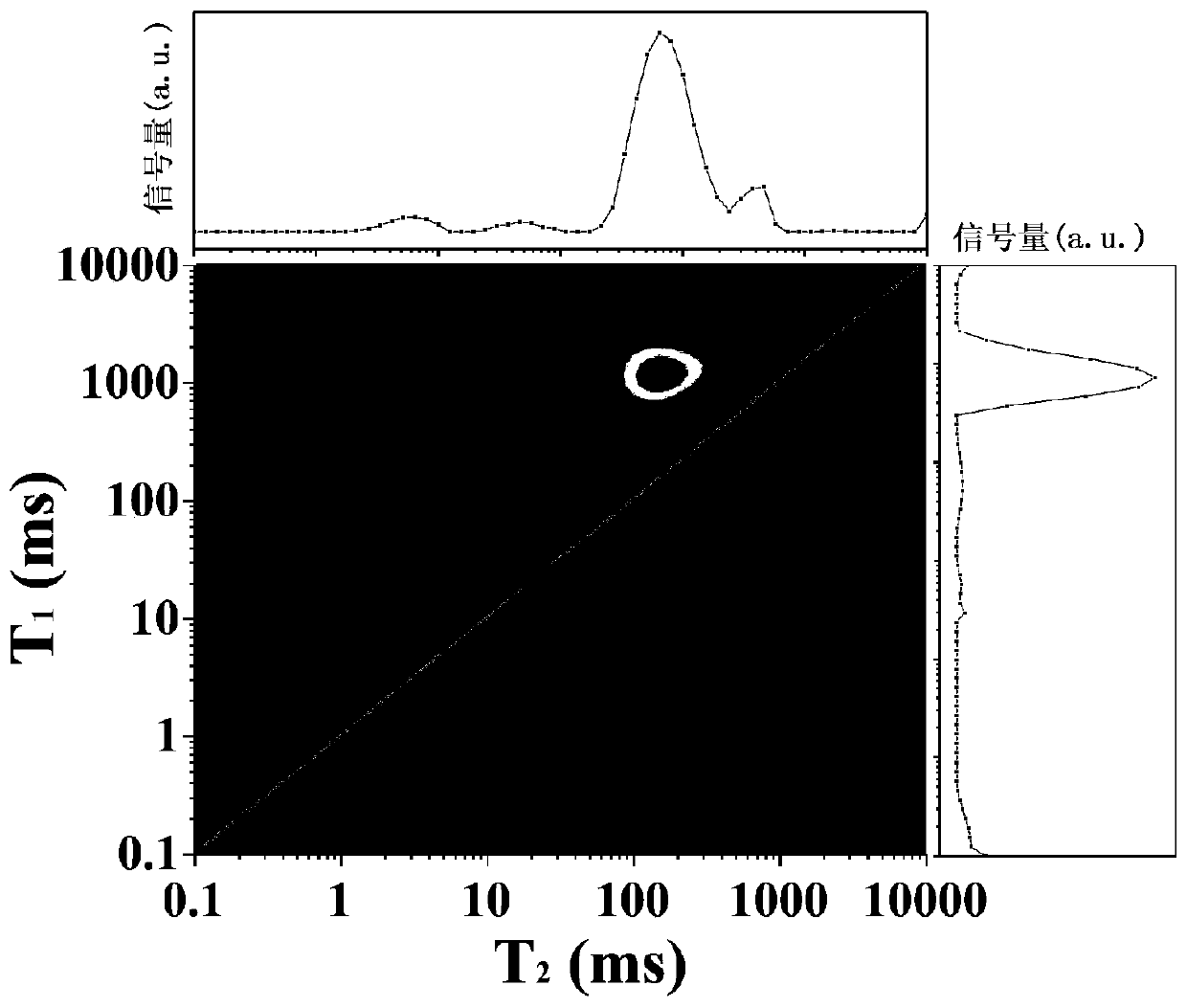Method for judging Mactra chinensis protein denaturation based on low-field nuclear magnetic resonance
A low-field nuclear magnetic resonance and protein denaturation technology, which is used in analysis by nuclear magnetic resonance, material analysis by resonance, and measurement devices. simple effect
- Summary
- Abstract
- Description
- Claims
- Application Information
AI Technical Summary
Problems solved by technology
Method used
Image
Examples
Embodiment 1
[0038] A method for judging the denaturation of Chinese clam protein based on low-field nuclear magnetic resonance, comprising steps:
[0039] S1. Low-field NMR analysis: use low-field NMR to collect relaxation information of Chinese clams boiled at 40°C for 2 minutes, use IR-CPMG pulse sequence method to collect NMR echo signals, and invert to obtain echo attenuation curve data, namely Longitudinal relaxation data and transverse relaxation data obtained by multi-exponential fitting;
[0040]Among them, the test conditions are as follows: SF=22, P1=12, O1=392842.53, TD=3675244, PRG=1, TW=5000, P2=25.04, DL2=0.6, NECH=15000, NT1=15, SW=200, RFD=0.08, DRG=3, NS=2;
[0041] S2. Map the transverse relaxation data obtained in step S1 to obtain a T2 relaxation spectrum, map the longitudinal relaxation data to obtain a T1 relaxation spectrum, and combine the T1 relaxation spectrum, T2 relaxation spectrum and NMR 2D Combine the spectra to obtain a two-dimensional spectrum of T1-T2; ...
Embodiment 2
[0046] A method for judging the denaturation of Chinese clam protein based on low-field nuclear magnetic resonance, comprising steps:
[0047] S1. Low-field NMR analysis: Use low-field NMR to collect the relaxation information of Chinese clams processed at 80°C for 2 minutes, then use the IR-CPMG pulse sequence method to collect NMR echo signals, and invert to obtain the echo decay curve data, namely Longitudinal and transverse relaxation data obtained using a multi-exponential fit;
[0048] Among them, the test conditions are as follows: SF=22, P1=12, O1=392842.53, TD=3675244, PRG=1, TW=5000, P2=25.04, DL2=0.6, NECH=15000, NT1=15, SW=200, RFD=0.08, DRG=3, NS=2;
[0049] S2. Map the transverse relaxation data obtained in step S1 to obtain a T2 relaxation spectrum, map the longitudinal relaxation data to obtain a T1 relaxation spectrum, and combine the T1 relaxation spectrum, T2 relaxation spectrum and NMR 2D Combine the spectra to obtain a two-dimensional spectrum of T1-T2; ...
Embodiment 3
[0054] A method for judging the denaturation of Chinese clam protein based on low-field nuclear magnetic resonance, comprising steps:
[0055] S1. Low-field NMR analysis: use low-field NMR to collect the relaxation information of Chinese clams processed at 100°C for 2 minutes, then use the IR-CPMG pulse sequence method to collect NMR echo signals, and invert to obtain the echo decay curve data, namely Longitudinal and transverse relaxation data obtained using a multi-exponential fit;
[0056] Among them, the test conditions are as follows: SF=22, P1=12, O1=392842.53, TD=3675244, PRG=1, TW=5000, P2=25.04, DL2=0.6, NECH=15000, NT1=15, SW=200, RFD=0.08, DRG=3, NS=2;
[0057] S2. Map the transverse relaxation data obtained in step S1 to obtain a T2 relaxation spectrum, map the longitudinal relaxation data to obtain a T1 relaxation spectrum, and combine the T1 relaxation spectrum, T2 relaxation spectrum and NMR 2D Combine the spectra to obtain a two-dimensional spectrum of T1-T2;...
PUM
 Login to View More
Login to View More Abstract
Description
Claims
Application Information
 Login to View More
Login to View More - Generate Ideas
- Intellectual Property
- Life Sciences
- Materials
- Tech Scout
- Unparalleled Data Quality
- Higher Quality Content
- 60% Fewer Hallucinations
Browse by: Latest US Patents, China's latest patents, Technical Efficacy Thesaurus, Application Domain, Technology Topic, Popular Technical Reports.
© 2025 PatSnap. All rights reserved.Legal|Privacy policy|Modern Slavery Act Transparency Statement|Sitemap|About US| Contact US: help@patsnap.com



